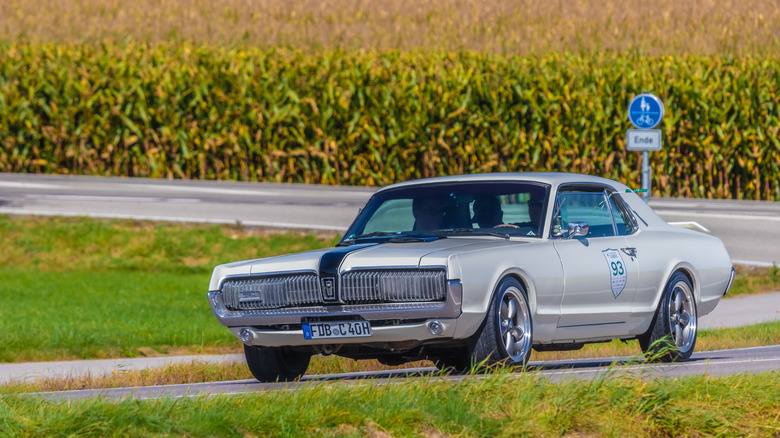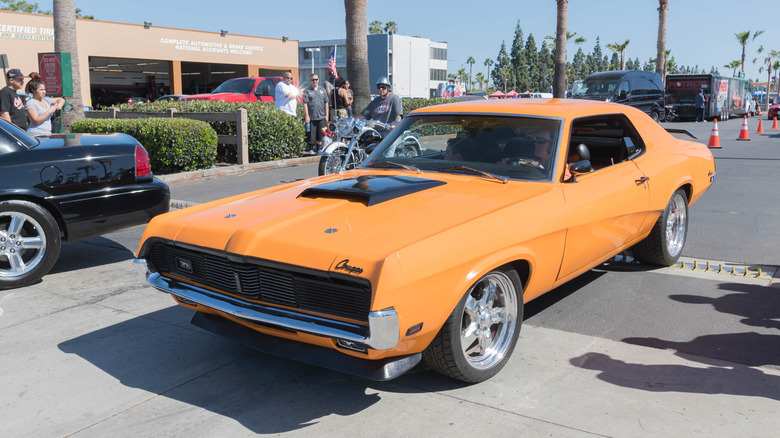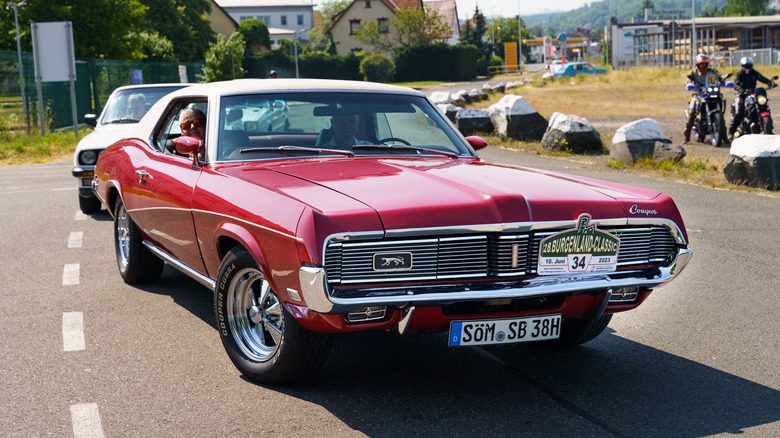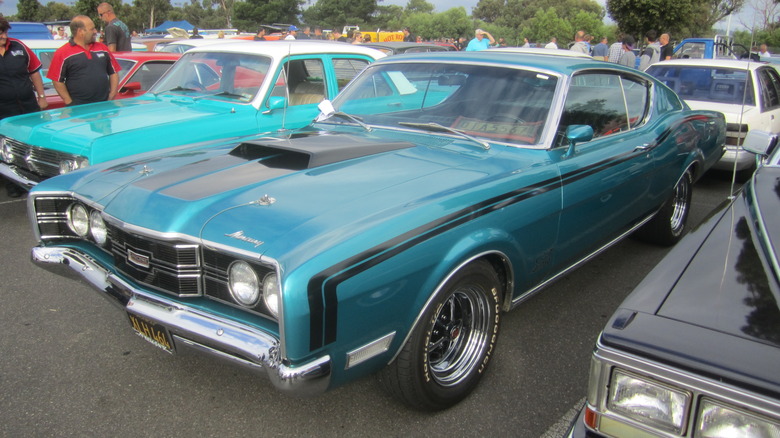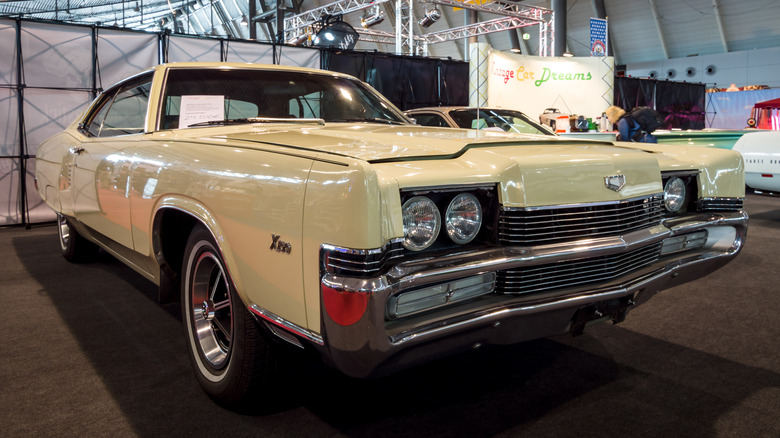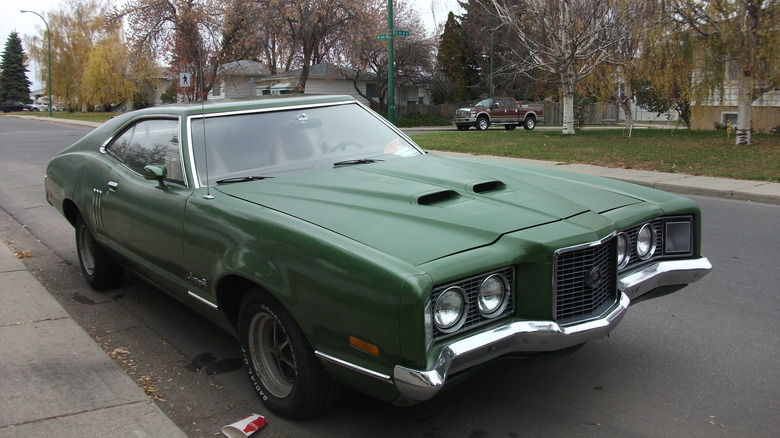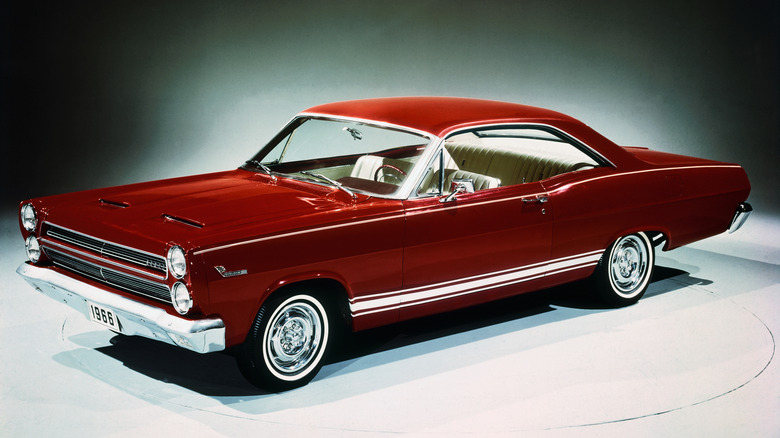6 Of The Most Underappreciated Mercury Muscle Cars
While the limelight often falls on more celebrated models from competing manufacturers, the Mercury brand (a subsidiary of Ford) quietly produced a lineup of muscle cars that, despite their abilities, remain underappreciated in the broader narrative of high-performance vehicles.
We'll be delving into some Mercury muscle cars that, for various reasons, have not received the recognition they arguably deserve. These models emerged when automakers were engaged in a horsepower arms race, crafting machines that embodied the spirit of speed and power. Sharing platforms with their Ford counterparts, they also offered unique features, performance capabilities, and distinctive styling that set them apart in the 1960s and 1970s.
As we get to the specifications, histories, and characteristics of each model, we aim to provide a fair review of what makes these Mercury muscle cars noteworthy and the factors that may have contributed to their relative obscurity — so here are six of what we think are the most underappreciated Mercury muscle cars.
Cougar Eliminator
The Mercury Cougar Eliminator possesses an interesting blend of performance and style, but it's still not getting the recognition it deserves. The Eliminator debuted in 1969 as an extension of the Cougar lineup, which is among the 12 classic American muscle cars worth every penny.
Under the hood, the Eliminator had an array of engine options, ranging from the 351 Windsor to the powerful 428 Cobra Jet V8. This diversity in powertrains allowed buyers to tailor their Cougar to their desired level of performance. The first-generation Eliminator featured distinctive styling cues such as bold stripes, a front air dam, and a rear spoiler for a more aggressive and memorable look. As the Eliminator evolved through subsequent generations, it continued to incorporate advancements in tech. For example, the 1970 model year introduced the Boss 302 engine option.
Despite its impressive specs and performance capabilities, the Eliminator struggled to gain the same recognition as its competitors from other manufacturers. One reason for the Mercury Cougar Eliminator's underappreciation lies in its limited production numbers compared to more prominent muscle cars — the car wasn't around much to be seen and appreciated. Pair that with the Mercury brand itself, often overshadowed by Ford, and it becomes pretty clear why the Eliminator was and is underappreciated.
Cougar GT-E 427
This car is another noteworthy but underappreciated member of the muscle car fraternity, especially considering how Mercury's Cougar rode the Mustang wave and exceeded expectations. Its noteworthiness, however, has a lot to do with its power plant, the 427 FE side oiler engine.
Rooted in Ford's development of the FE engine family in the late 1950s, the 427 FE side oiler earned a significant reputation, powering a range of high-performance vehicles — it became a symbol of power and speed. The engine's evolution saw applications in various Ford models, from the drag racing success of the 390 to the dominating 427-powered Galaxies in NASCAR.
In the case of the 1968 Cougar GT-E, the 427 FE side oiler engine delivered a potent 390 horsepower, contributing to the model's performance-oriented character. The GT-E package, a bona fide performance offering, included features such as a special high-rpm hydraulic cam, heavy-duty valve springs, and a Super Competition Handling Package with stiffer springs, a larger-diameter sway bar, and heavy-duty shocks.
Despite its impressive specifications and historical significance, the GT-E remains relatively obscure, especially the 427-equipped variants. Once again, limited production seems to be the culprit, with only 357 of the 1968 Cougars fitted with the 427 FE side oiler. The exclusive nature of this engine option, coupled with its discontinuation in June 1968, also adds a layer of uniqueness to the GT-E.
Cyclone Cobra Jet
Introduced in the late 1960s, the Cyclone Cobra Jet aimed to establish Mercury as a contender in the high-performance vehicle market. The Cyclone Cobra Jet had the potent 428 Cobra Jet V8 engine. Interestingly, despite its actual displacement being 426.544 cubic inches, Ford labeled it the "428" to avoid confusion with the previous 427 engines introduced in 1966. In the Cyclone CJ, this engine was mated to a four-speed manual transmission, even though Ford made a three-speed automatic option for the CJ.
In terms of styling, the Cyclone Cobra Jet displayed the characteristic design elements of the muscle car era, including distinctive striping and badging that set it apart from standard Cyclone models. The aggressive aesthetic was complemented by performance-oriented features such as a functional hood scoop and a competition-style hood lock.
While the Cyclone Cobra Jet remains a noteworthy muscle car in automotive history, its underappreciation can also be attributed to factors such as production volume and the overshadowing presence of other iconic muscle cars of its time.
[Featured image by Sicnag via Wikimedia Commons | Cropped and scaled | CC BY 2.0 ]
Marauder X-100
The Mercury Marauder X-100, an attempt to inject higher performance into the Marauder lineup, was introduced with a focus on cosmetic enhancements. Available with a few seat options and featuring a floor console housing a U-shaped automatic transmission shift handle, the X-100 sought to provide a more luxurious driving experience. You can also find aesthetic touches like Kelsey-Hayes road wheels and rear fender skirts, contributing to its distinctive appearance.
Priced at just over $4,000 in its time (equivalent to more than $31,500 in 2023 dollars), the Marauder X-100 managed to sell about 9,000 units. However, its limited lifespan in Mercury showrooms, spanning only a few years, is most likely due to lukewarm interest from the brand's traditional customer base. Sales in the second year constituted roughly a third of Marauder's sales in its first year due to price bumps.
By 1970, Mercury faced a decline in Marauder sales, according to Driving Line, selling 10,000 fewer units compared to 1969. The brand's shift towards more significant styling and increased focus on creature comforts, coupled with a departure from performance-oriented models, positioned the X-100 as an outlier. The reconfiguration of Mercury's lineup in 1971, which came later, aimed at targeting buyers priced out of a Lincoln, further marginalized the X-100.
Montego GT
Born out of the declining popularity of muscle cars like the Cyclone, the Montego GT aimed to cater to those seeking power within the midsize luxury car market. Although it inherited the legacy of its muscular predecessors, the Montego GT was ultimately forgotten over time.
Sporting a revamped design with a sleek fastback, the Montego GT housed a variety of engine options, ranging from a standard 302-cubic-inch V8 to more powerful engines like the 351, 400, and 429 V8s. While these engines offered varying performance levels, they fell short of the high horsepower outputs associated with traditional muscle cars.
The transmissions available for the Montego GT included both manual and automatic options made for different engine configurations. Despite offering a multitude of transmission choices, the GT's weight increased from its predecessors, and reduced compression ratios impacted its overall performance as well, resulting in diminished horsepower and torque figures for the 1973 model year.
With an exterior redesign featuring a traditional egg crate grille and a recognizable fastback profile, the Montego GT attempted to blend luxury and sportiness, but, sadly, the marketing strategy highlighting the GT as a sporty luxury offering within the midsize lineup seemingly wasn't enough to offset the decline in performance and appeal to the evolving tastes of muscle car lovers.
[Featured image by dave_7 via Wikimedia Commons | Cropped and scaled | CC BY 2.0 ]
Cyclone GT
The Mercury Cyclone GT or the Comet Cyclone GT, essentially the same high-performance model of the Cyclone line at different points in its history, is not an unpopular muscle car, but it is underappreciated. The Cyclone GT made its mark during the 1960s and sought to deliver performance and style within the compact car segment. Equipped with various engine options, the Cyclone GT offered powertrains ranging from the base 289 cubic-inch V8 to the more powerful 390 cubic-inch V8, which was great for buyers who wanted a tailored Mercury experience. Performance-wise, the Cyclone GT offered a balance between everyday usability and sportiness. While not as powerful as some of its larger counterparts, it provided a spirited driving experience within the compact car category.
Stylistically, the Cyclone GT featured characteristic design elements of the era, including a distinctive grille, badging, and a sportier stance compared to standard Comet models. The GT model also included notable features such as bucket seats and a center console, contributing to its sporty interior.
The Cyclone GT emerged during a time when American automakers were increasingly introducing compact cars with performance-oriented variants, which was both a blessing and a curse for the GT. This shift might have been good news for GT sales initially. However, changing consumer preferences and the desire for even smaller, even more agile vehicles that still delivered on power and speed probably left the Cyclone in the dust.
